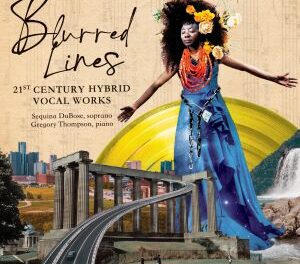Cantari, the advanced choral group of Voices: The Chapel Hill Chorous, presented a concert titled “1685 Was a Very Good Year! Bach and Handel,” thus invoking the mellow nostalgia of the Frank Sinatra classic and the two pillars of the Baroque era of classical music: Johann Sebastian Bach and George Frederick Handel, both of whom were born in 1685 and were giants in the history of music.
The concert, conducted by Dr. Sue Klausmeyer, opened with Handel’s Coronation Anthem No. 2, HWV 259, “Let Thy Hand Be Strengthened,” one of the four composed for the coronation of King George II in 1727. The anthem, a setting of Psalm 89, verses 13-14, is divided into three sections, in the fast-slow-fast sequence. The middle verse is a delicately contrasting section between the jubilant outer verses. The chorus and orchestra were especially in touch with the lyrical aspects of this majestic anthem and the performance was solid.
Handel wrote 11 expansive anthems in 1717-1719 while in the employ of the Duke of Chandos. The Duke had a fine staff of musicians, and these anthems often sparkle with some of the great techniques of the Baroque. Chandos Anthem No. 8, HWV 25, “O Come, Let Us Sing unto the Lord” is scored for four-part chorus, 4 soloists, strings, 2 oboes, 2 recorders, and continuo and is cast in nine movements. It begins with an overture that starts with alternating passages of bold, joyous music and the exquisite sound of violins playing in thirds. A second section presents celebratory material with imitative entrances from the orchestra.
The opening chorus “O come, let us sing” begins with a bold unison statement of the first words of the text, which is drawn from Psalms 95, 96, 97, 99 and 103 in their Prayer Book versions. The movement progresses with chordal and fugal development and ends with an early example of choral recitative, which later became a staple of Handel’s oratorio choruses.
Section 3 is a tenor solo and was sung by Dale Bailey. His lyrical tenor voice matched the text nicely. The recorders in duet supplied an exquisite accompaniment. Section 4 brings the chorus to the front again with a rigorous song of worship that almost cries out for trumpets. The 5th section begins with an introductory passage for tenor, sung by Kevin Ramer, with confidence and expressiveness, followed by the chorus singing the development. Two thematic ideas in separate fugal expositions are combined in some extraordinary polyphonic writing. It also features the basses singing a series of repeated pitches to illustrate that God has “made the world so fast it cannot be moved.”
There followed, in sections 6 – 8, three arias for soprano and alto. “O Magnify the Lord” was sung by Caitlin Laird whose pleasant soprano quality gave the aria lilting beauty. “The Lord Preserveth” was performed by alto Cassie Ford. Her rich voice was deep and warm. “For look as high as the heaven is” was rendered by Jane Thurston; her full soprano range was impressive from low to high. The closing chorus, “There is sprung up a light for the righteous,” provided a fitting conclusion to this largely celebratory anthem. Handel introduces new music in this closing chorus and with fugal development and text painting brings the anthem to a joyful conclusion.
Bach’s celebratory wedding cantata, S.196, Der Herr denket an uns (The Lord careth for us), was likely written for a friend around 1707-1708 when he was in Mühlhausen. It is not a striking cantata on first hearing, but repeated hearings bring rewards. The lightness and simplicity of the music matches the simple and beautiful message of the text which is taken from Psalms 115:12-15 in Luther’s translation.
The wedding cantata begins with an instrumental Sinfonia followed by a chorus, a soprano aria, and a tenor and bass duet and then closes with lively chorus. The soprano soloist was Thurston, Baily was the tenor, and Adam Dengler the Bass. Each sang these beautifully crafted and expressive pieces effectively.
The chorus maintained the high standards instilled in them by Klausmeyer who kept all in focus and on track. The singing was expressive and a very nice blend.
Baroque music, composed 300 years ago resonates meaningfully in this age of divisiveness and uncertainty. It’s grounded base, ornamentations, simple cadences, and straight-forward melodies provide comfort and reassurance. Today’s concert was much appreciated by all.











